Inside\Within is a constantly updating web archive devoted to physically exploring the creative spaces of Chicago's emerging and established artists.
Support for this project was provided by The Propeller Fund, a joint administrated grant from Threewalls and Gallery 400 at The University of Illinois at Chicago.

Search using the field below:
Or display posts from these tags:
3D printing 3D scanning 65 Grand 7/3 Split 8550 Ohio 96 ACRES A+D Gallery ACRE animation Art Institute of Chicago Arts Incubator Arts of Life audio blogging Brain Frame CAKE Carrie Secrist Gallery casting ceramics Chicago Artist Writers Chicago Artists Coalition Chicago Cultural Center Cleve Carney Art Gallery Clutch Gallery Cobalt Studio Coco River Fudge Street collage collection Columbia College Chicago Comfort Station comics conceptual art Contemporary Art Daily Corbett vs. Dempsey Creative Capital DCASE DePaul University design Devening Projects digital art Dock 6 Document drawing Duke University dye Elmhurst Art Museum EXPO Chicago Faber&Faber fashion fiber Field Museum film found objects GIF Graham Foundation graphic design Harold Washington College Hatch Hyde Park Art Center illustration Image File Press Imagists Important Projects ink installation International Museum of Surgical Science Iran Jane-Addams Hull House Museum jewelry Joan Flasch Artist's Book Collection Johalla Projects Julius Caesar Kavi Gupta Links Hall Lloyd Dobler LVL3 Mana Contemporary metalwork Millennium Park Minneapolis College of Art and Design Monique Meloche Museum of Contemporary Art Chicago (MCA) Museum of Contemporary Art Detroit (MOCAD) Museum of Contemporary Photography (MoCP) National Museum of Mexican Art (NMMA) National Resources Defense Council New Capital Northeastern Illinois University Northwestern University Ox-Bow painting paper mache Peanut Gallery peformance Peregrine Program performance photography PLHK poetry portraiture printmaking public art Public Collectors publications Renaissance Society risograph rituals Roman Susan Roots&Culture SAIC screen printing sculpture Sector 2337 Shane Campbell Silver Galleon Press Skowhegan Slow Smart Museum Soberscove Press social practice South of the Tracks Storefront SUB-MISSION Tan n' Loose Temporary Services Terrain Terrain Biennial text-based textile textiles The Banff Centre The Bindery Projects The Cultural Center The Franklin The Hills The Luminary The Packing Plant The Poetry Foundation The Poor Farm The School of the Art Institute of Chicago (SAIC) Threewalls Tracers Trinity College Trubble Club University of Chicago University of Illinois at Chicago (UIC) University of South Florida at Tampa Valerie Carberry Vermont Studio Center video weaving Western Exhibitions wood carving woodwork Yellow Book Yollocalli Arts Reach zinesInside\Within is produced in Chicago, IL.
Get in touch:
contactinsidewithin@gmail.com
Eric Fleischauer: The Stability of Ephemeral Media
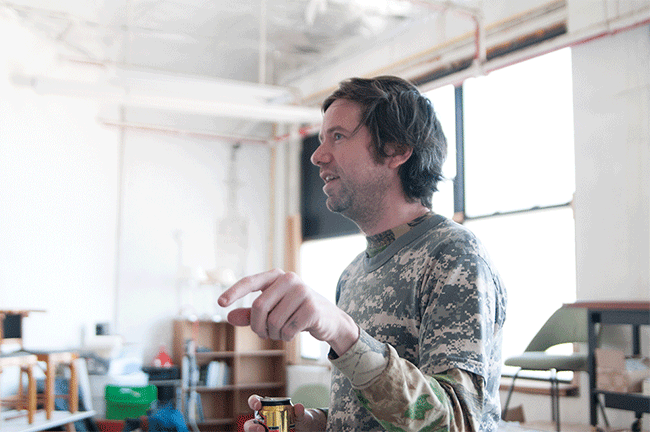
Eric places his work in two realms—moving and still images accessed both online and in-person. Intrigued by dying and dead media, he plays with the non-literal use of past media objects and meshes old forms of media production with the new.
I\W: Is it possible to examine GIFs through a serious lens?
EF: Definitely. I think GIFs have a really interesting place in the history and the trajectory of moving image. I think they are super serious because everyone can use them. I am really into the idea of democratizing the art production mode, so that is one of the reasons that I really got into looking at them, observing them, and viewing them critically. I wanted to know what these people who don’t normally have exhibitions are saying. A lot of GIFs are remediated content from other places, like Youtube or whatever, but that is interesting to me because it is a cultural signpost. It tells you what is happening. With my background I just can’t help but think about it seriously, it is so prominent.
Are there a certain division of GIFs that peak your interest more than others?
The ones that I am most drawn to are really inventive, creative ones that are doing something smart and conceptual. That could be someone that takes a really rare piece of footage like this one I saw of a Japanese prime minister from the 50s getting assassinated with a sword. It was caught on television at the time, but I had never seen it until the GIF was on Tumblr. The maker really didn’t do anything except reposition it. I think that is really rad, but that is just how I think about art. It isn’t really about production of original ideas, it can be just about the platform that you have to say something.

How would you classify an Internet artist?
I would classify a net artist as a person whose primary focus in not showing in a gallery or a museum. They use the Internet and language of social media to make work. Their work is mainly meant to be exhibited on the Internet. There is this whole debate in the net art community about net art in galleries, and if that is a real thing that needs to happen. I think the gatekeepers are hesitant to think about the Internet, which is so non-gatekeeper, and trust it. That’s just my theory, and I do know that institutions have been accepting these net artists—but they want them to come to their house so to speak. They want to know if they can sell it, and part of the Internet is that it is hard to commodify something that is infinitely reproducible or downloadable. There is a weird inherent contradiction between the gallery and the Internet. There are many people who have different stances on this, but I am one that thinks you can easily work between the two if you do it in a very contextual and smart way.
In what ways do you receive feedback from the work that is posted online?
You get a lot of feedback from platforms like Tumblr and Facebook. I have always been more interested in using art as a platform for my own weird ideologies and philosophies. I use it as a backdoor to be a philosopher or media critic. I don’t have to find a place to publish my ideas, I can communicate with an image. An image like “Universal Paramount” or “PUNK IS DAD,” those two works got really popular online but no one knows that Eric Fleischauer made them, and that is fine with me. I get all of these weird experiences where people are reposting my images and I find them. I found an image I had created on some Facebook group called “Netflix for Chicks” or something like that. Sometimes people contact me and ask if an image is for sale. Then they find out that it is more than $100, and don’t want to buy it and will just print it out. Dealing with that duality, I was able to get that out on the Internet and to the general population, but I also took it and put it in a gallery. It has been in some shows and in the Museum of Contemporary Photography’s collection. It kind of exists in both realms.
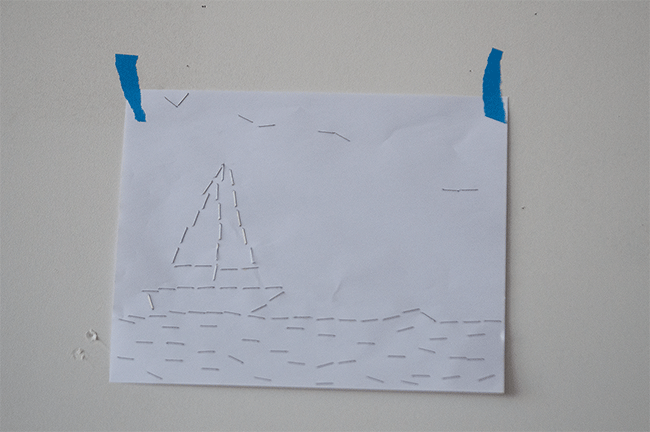
How else do your images like “Universal Paramount” exist in two realms?
I first photoshopped “Universal Paramount” and then my friend Aron Gent helped me photograph it off of a really high res screen with a 4X5 camera and we made these huge prints. To get it larger and into the world I still had to put it on a piece of film. That piece is interesting because of its existence in the two realms. That’s exciting to me that I can have both audiences, and have it be something that is accepted. I feel like video and net art aren’t participating in the art market so much which I don’t really care about, but it would be nice to be paid for your work as an artist.
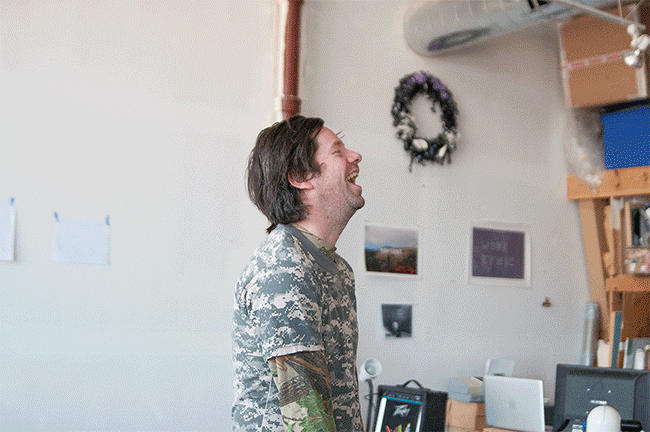
Is that process the same you used to create “Punk is Dad?”
Yeah, exactly. I was doing that for awhile—getting images off of the Internet, manipulating them, and then photographing them and returning them to their actual prints. I like that weird transformation because if you look really closely you see the weird moiré pattern of the screen. It adds this extra texture or layer. I like that process. I am also into mining image banks and re-presenting them in a gallery, or turning them into a print that is of higher quality. I really love this excerpt by Hito Steyerl called “In Defense of the Poor Image.” She talks about how images online are compressed and moving fast and they’re not really high quality. I like the idea of having a high quality way of seeing something, having the ability to see something in a new way. I still believe in that quality and technique is important.
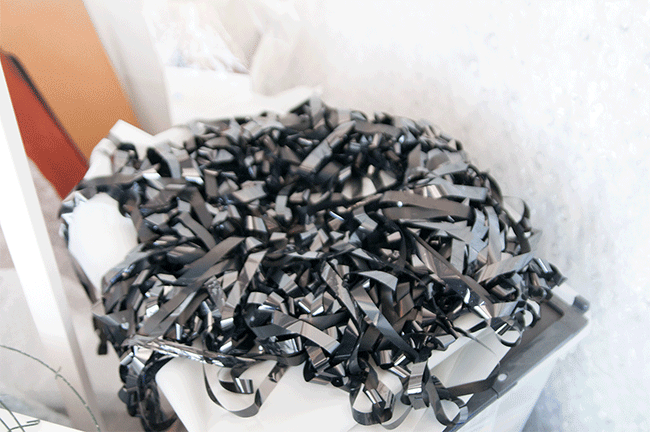
What types of work do you make that remains solely in their physical from, detached from the Internet?
I have always been interested in the transformation of materials. The wreath with the VHS tape is about a dead media or dying media and using that media without using it in a literal way. I’m into playing with form. Form is content. I like thinking about those ideas and potentials.
I have always been more interested in using art as a platform for my own weird ideologies and philosophies. I use it as a backdoor to be a philosopher or media critic. I don’t have to find a place to publish my ideas, I can communicate with an image.
How do you view death on the Internet? Do you believe that people, fame, or objects can ever actually die if they are produced online?
Yes. A metaphorical death— they can disappear. That’s part of one of the main ideas behind “twohundredfiftysixcolors.” I don’t think that the Internet is a stable platform, it’s so fluid and fluctuating. A server crash could destroy a huge bank of information and content. There are examples of that, like GeoCities. They lost their servers and whoever took over the servers deleted all that content. A few artists and Internet archivists went and tried to start salvaging that data, but they couldn’t get it all. Stuff is not enshrined on the Internet, it can disappear. I am into the stability of ephemeral or immaterial media because the digitization of everything comes at a risk of stability. VHS tape is always more stable than DVD even though DVD took over and was more high-tech. I feel like media has always been an issue, and the more advanced we get, the less stable media gets. Even the best, high quality videos that get put online have been compressed. There is already a compression, a loss—a tiny death. Anything that is online has already had something removed from it if you think about it. I am actually teaching a class at SAIC next fall on it. I organized this thing with jonCates called the Media Archeology Institute at SAIC which brought in academics and artists to talk about these kind of issues.
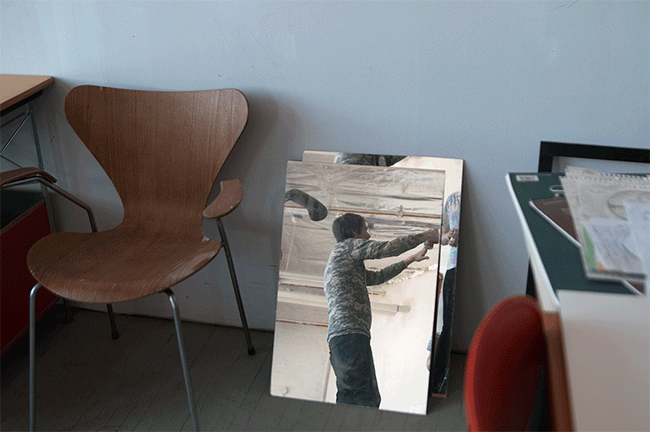
Do you use the platform of Vine as part of your practice, or a documentation of your practice?
I use it for those two things and more. I use it as an always-on opportunity to catch something. I use a lot of different tools to get at certain ideas. I love Vine, I love the idea of restriction. You only have 6 seconds, you use it as a moving image snapshot. My friend Brandon Alvendia asked me to document a performance he did with Vine. I am thinking about putting some of my Vines together and creating relationships between things that happened maybe a year apart, but have some similarities.
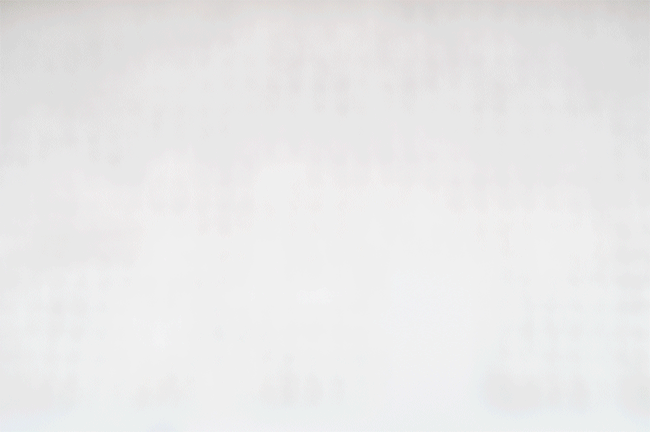
How have you explored the Internet in your drawings?
I have drawn CAPTCHAs with the idea that those things are generated by computers but are only supposed to be legible by humans. Most of them I have given away or don’t have anymore. They are all still lives if you will, drawn from the Internet. They are usually ones I have encountered buying tickets or what not. I try to make them personal and imbued with an experience that I had, but sometimes I will search for really sexy looking ones and draw those. I am fascinated by them because it is how a computer and bot tries to emulate human behavior. I am not a really good drawer, actually I am a terrible drawer, but it is easy to draw stuff like this because it is non-pictorial.


